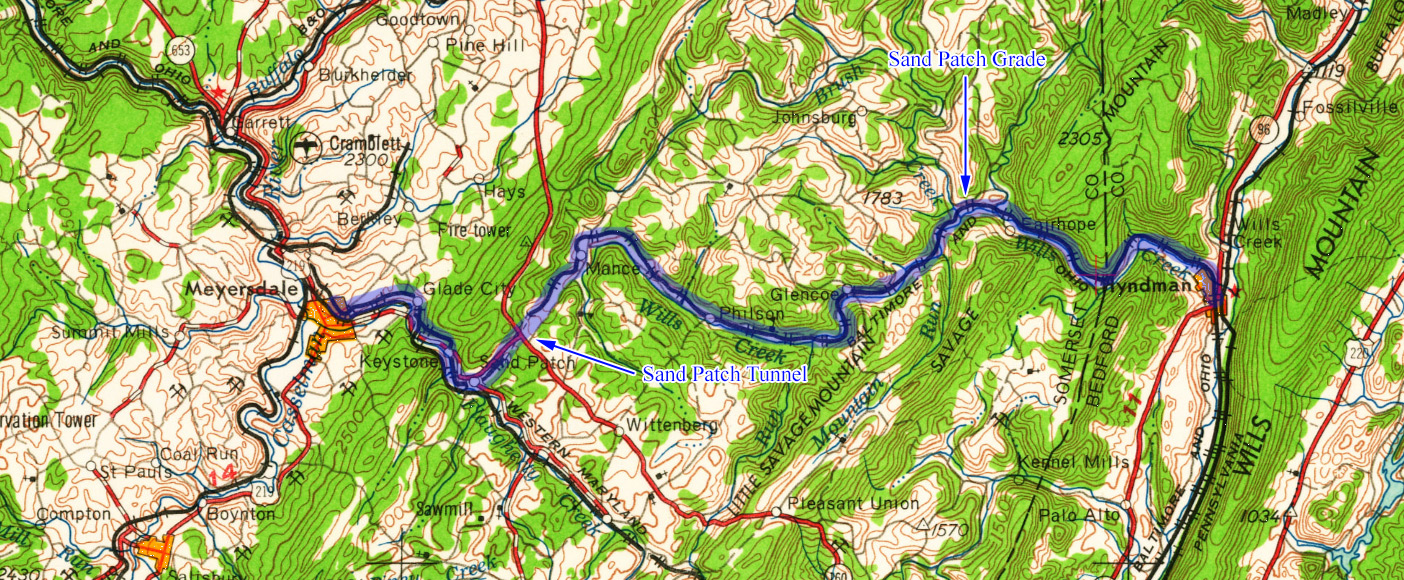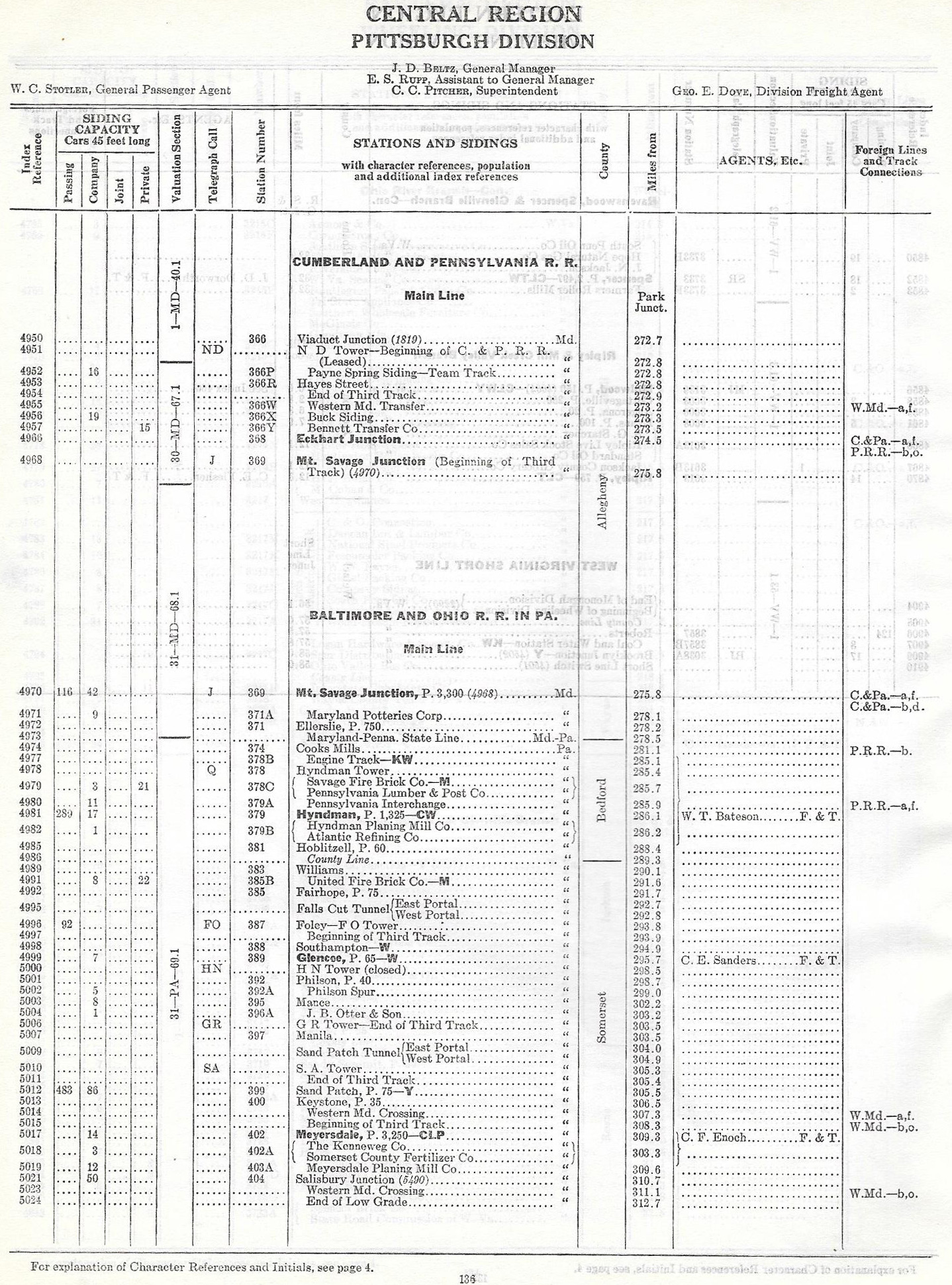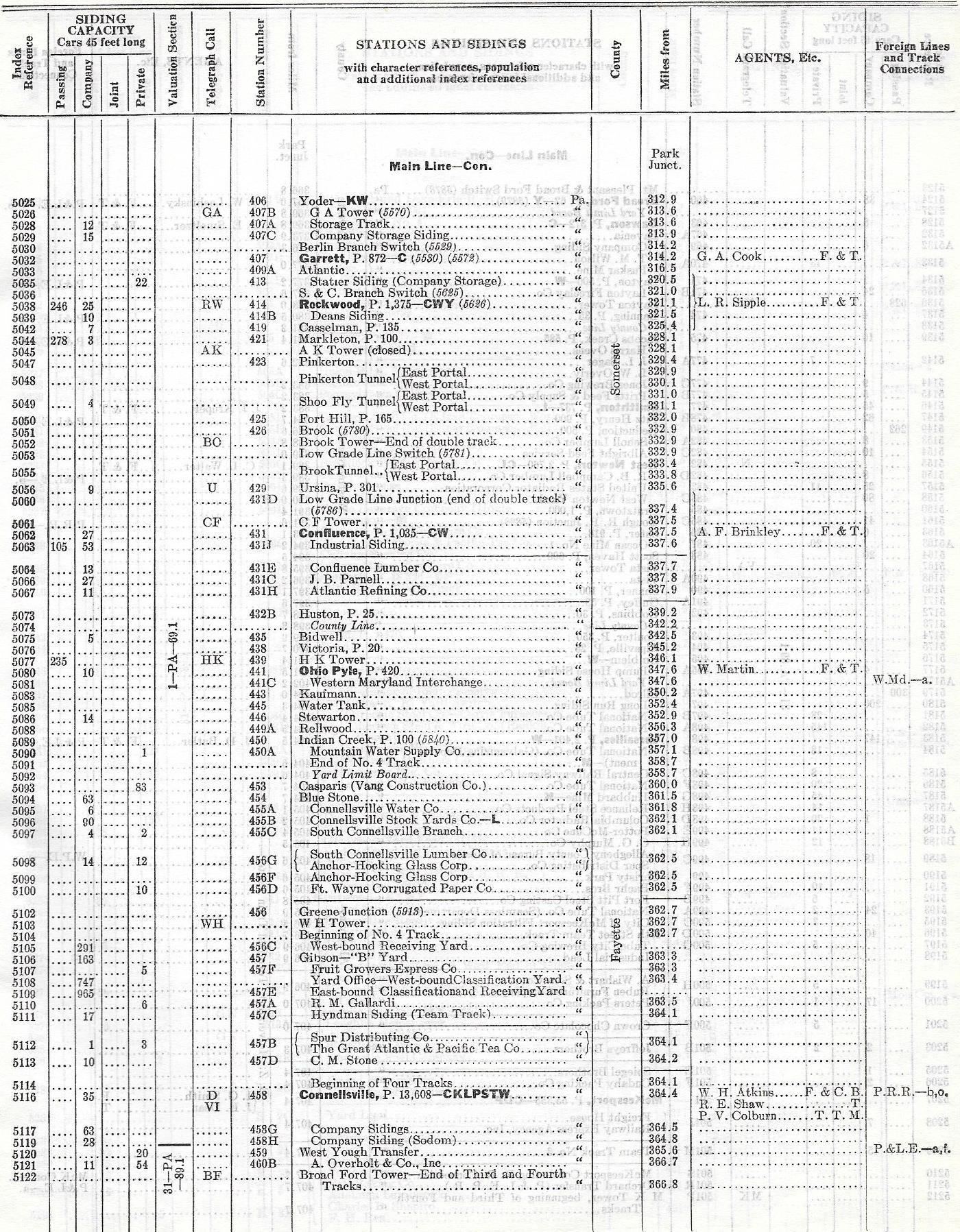- Home ›
- Landmarks ›
- Sand Patch
Sand Patch Grade (Pennsylvania): Map, Route, History
Last revised: February 28, 2025
By: Adam Burns
Sand Patch was built by the Baltimore & Ohio, an entity committed to pushing the boundaries of rail transport in America. Known for their expertise and tenacity, the B&O played a significant role in the industrial development of the United States, providing vital transport infrastructure.
Sand Patch, located in the Allegheny Mountains of southwestern Pennsylvania, is one of the most challenging railroad routes in the eastern United States, known for its steep grades, numerous curves, and heavy freight traffic.
The double-tracked route is currently owned and operated by CSX Transportation as part of its Baltimore-Chicago mainl ine. The summit, Sand Patch, is the highest point on the CSX system and is a popular spot for railfans due to its scenic views and frequent train activity.
Photos
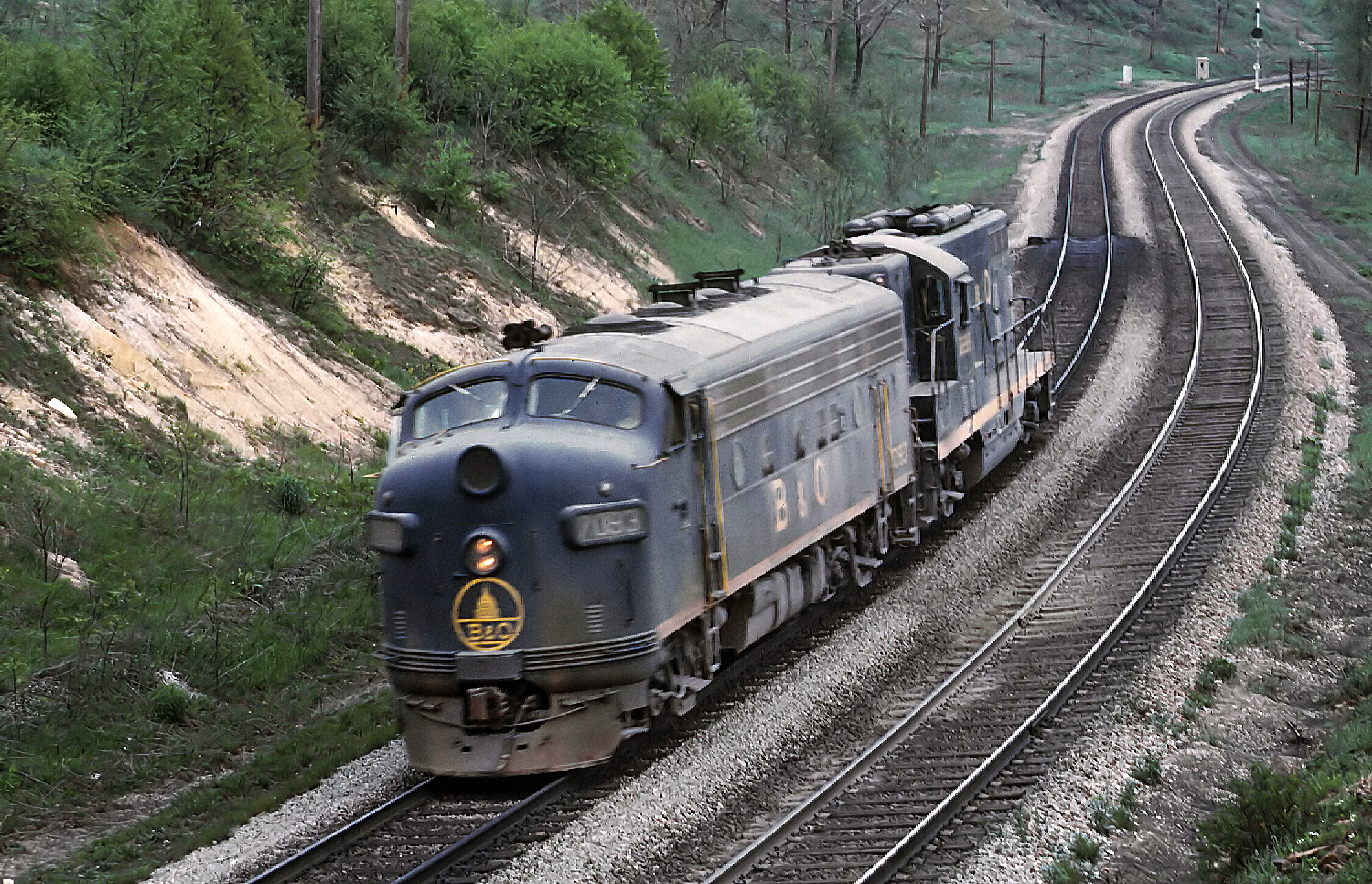 A Baltimore & Ohio helper set, led by F7A #7093 (an ex-C&O unit), were photographed here by Roger Puta west of Meyersdale, Pennsylvania on May 17, 1969.
A Baltimore & Ohio helper set, led by F7A #7093 (an ex-C&O unit), were photographed here by Roger Puta west of Meyersdale, Pennsylvania on May 17, 1969.History
One of the amazing feats of engineering in rail transport history is the establishment of Sand Patch. The line saw its construction begin under the auspices of the Baltimore and Ohio, the nation's first-common carrier.
This rail marvel is located in the state of Pennsylvania, running over the challenging terrain of Sand Patch, a summit within the Appalachian Mountains. More specifically, it spans from Cumberland, Maryland, to Connellsville, Pennsylvania, serving as a key connector link in this region.
The grade comprises a track length of 100 miles. It brings alive the phrase 'going the distance', given the challenging mountain landscapes through which it steadfastly winds.
Sand Patch is renowned for both its engineering and exhilaration as it offers an impressive show between machine and nature. This was especially true in the steam era when large locomotives such as 2-10-2 "Big Sixes" and 2-8-8-4 EM-1s battled the mountain.
Thankfully, noteworthy photographers like William (Bill) Price and Bob Collins captured these timeless scenes on film, many of which were taken in color. It is truly difficult to imagine what it must have sounded like hearing the thunder of an EM-1 or multiple 2-10-2s grinding upgrade on a daily basis in southern Pennsylvania.
Ruling Grade
The ruling grade of Sand Patch Grade is 1.2% for eastbound trains and 1.8% for westbounds, making it one of the most technically demanding railroad routes in the United States.
For more than a century trains have fought the grade, where the B&O's main line to Pittsburgh crosses the summit of the Allegheny Mountain range at Sand Patch, Pennsylvania.
During its B&O era, the Sand Patch represented a major locomotive highway across the Appalachians. Today, under the management of CSX Transportation, the route continues to hold significant importance in the broader rail network.
With the consolidation of many railroad operations, the Sand Patch now forms part of the Keystone Subdivision in the CSX systems, thus continuing its legacy of being an integral transport cog.
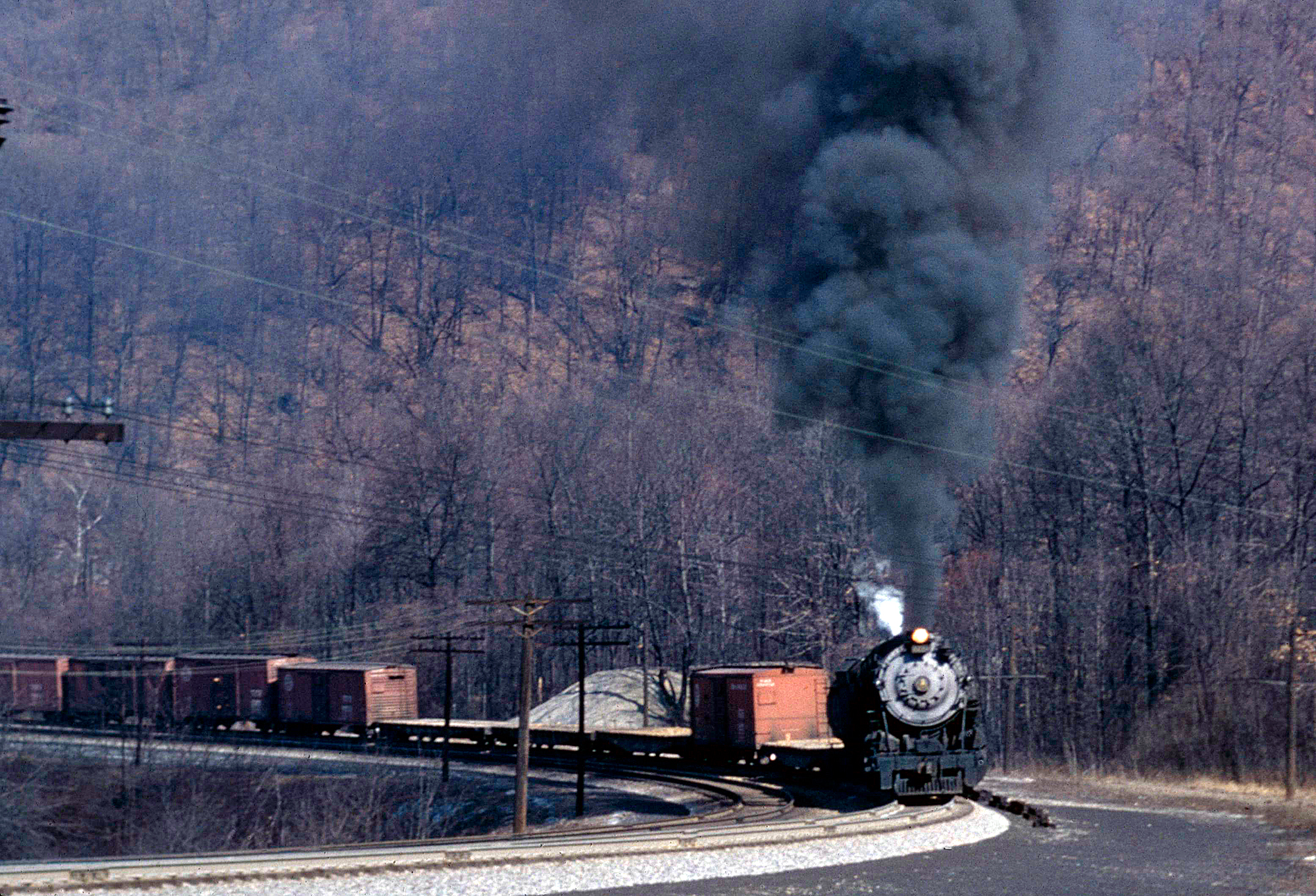 A Baltimore & Ohio 2-10-2 "Big Six" grinds its way up Sand Patch Grade during the 1950s. American-Rails.com collection.
A Baltimore & Ohio 2-10-2 "Big Six" grinds its way up Sand Patch Grade during the 1950s. American-Rails.com collection.SA Tower
Adding to the historical wealth of the Sand Patch is 'SA' tower. This controlled passing and cross-traffic movement - essentially commanding trains in and out of the double-tracked tunnel. Albeit, the 'SA' officially ceased operations on November 7, 2001.
While it continues to attract many visitors annually, modern operations are rather bland; SA Tower is gone and you will no longer see big steamers in action. Nevertheless, for those wishing to see what mountain railroading is all about, a visit to Sand Patch is quite an experience.
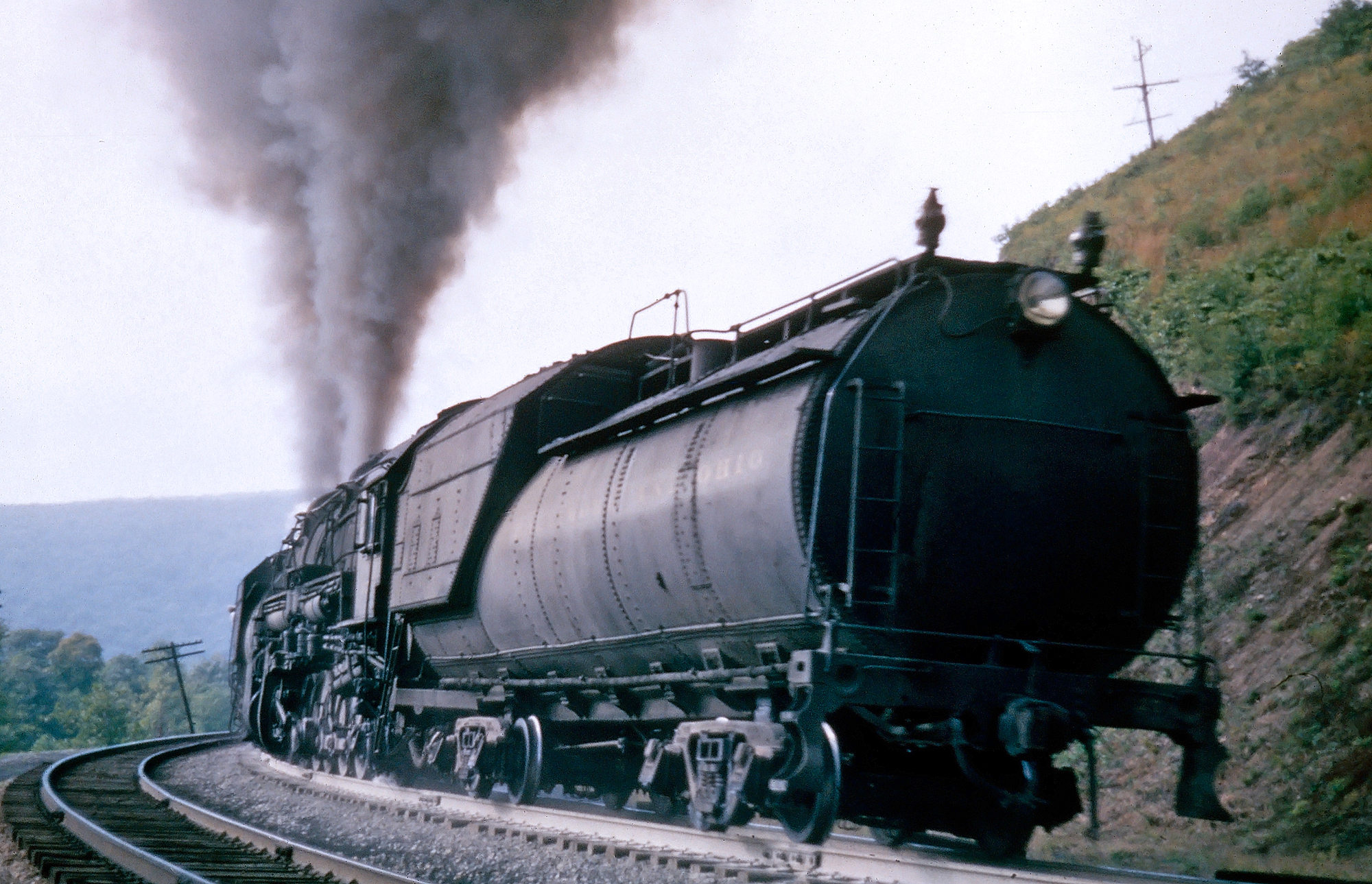 A pair of Baltimore & Ohio 2-10-2 "Big Sixes" assist a westbound freight over Sand Patch, circa 1955. American-Rails.com collection.
A pair of Baltimore & Ohio 2-10-2 "Big Sixes" assist a westbound freight over Sand Patch, circa 1955. American-Rails.com collection.The B&O was forever plagued with locating a manageable main line through the Appalachian Mountains as Pennsylvania forbid the railroad from building through its borders during the mid-19th century.
At the time the B&O was on track to dominate the eastern landscape and the state feared it would render its own Pennsyvlania Railroad obsolete. As a result, the legislature denied its entry in 1847 and the Baltimore road was forced to build a route through the more rugged areas of then-eastern Virginia and western Maryland.
Map
By 1852 the B&O had reached the Ohio River city of Wheeling, Virginia via Cumberland, Maryland. Five years later, in 1857, the railroad had secured a more southerly route to Parkersburg, thus bolstering its western connections. Realizing it still needed a direct connection to the growing city of Pittsburgh, the B&O began looking for another route.
To do so it underwrote the Pittsburgh & Connellsville Railroad, which began building east from Pittsburgh in 1847 and had connected its namesake cities by 1857. The B&O nearly lost its controlling interest in the P&C when the PRR was allowed to takeover the line in 1864.
However, the B&O took the issue to court and won back the railroad in 1868. By May, 1871 the line was open between Cumberland and Pittsburgh. The original Sand Patch Tunnel, at the grade's summit, began construction in the early 1850s and had opened 1854.
The B&O elected to construct a new bore in the late 1860s to lower grades and increase capacity. The new structure, still in use today, was completed in 1871.
Second Tunnel Construction
Sand Patch Tunnel is quite long for an eastern railroad, listed by the B&O at 4,474.7 feet. In 1911 - under the direction of president Daniel Willard who implemented system wide improvements - it was widened to accommodate two tracks. The project was completed in 1914.
Today, the tunnel remains double-tracked under successor CSX. According to the B&O's 1948 records the it is 31-feet wide and 24-feet, 10-inches tall and is entirely concrete lined with arched portals.
Profile
While the grade and tunnel are still a sight to see today, it was truly something to see during the steam era on the Baltimore & Ohio. Large steam locomotives like the 2-8-8-4 Class EM-1 and others literally shook the earth in their efforts to move freight over Sand Patch.
During the B&O era the route was officially listed as the railroad's Pittsburgh Division between Cumberland and Pittsburgh.
Today
Sand Patch, now managed by CSX , continues to handle significant freight tonnage. Averaging about 20 freight trains per day, this historic line continues to play a systematic role in goods transportation.
Its enduring significance underscores the technical achievements made during its construction and the ongoing operational challenges it imposes on this mountainous terrain.
Despite the passing of more than a century since its construction, the Sand Patch continues to be a test for man and machine. Topography has made it such a difficult stretch of railroad to operate, underpinning the immense engineering challenge that it represents.
Both the B&O and CSX ensured operation within stringent safety regulations, in continuous battle against unyielding geography. From harsh winters to the risk of landslides, the Grade’s maintenance and operation is an enduring saga.
An essential part of the railway history of the US, the Sand Patch paints a grand portrait of engineering challenge and triumph. It serves as an important snapshot of the progression of rail transport.
While CSX Transportation operates the Sand Patch, the architectural imprint of the B&O era still reverberates across the landscape. The legacy infrastructure benefits the current operations and continues to fascinate rail enthusiasts.
In the modern era, the Internet age has fueled interest in the Sand Patch among a wider audience, beyond just seasoned rail fans. Its history and challenging operations appeal to those interested in industrial history, engineering, geography, and logistics.
Sand Patch has also made its way to digital podiums – emerging as a popular choice in leading train simulator games. Its challenging gradients and atmospheric landscapes encapsulate Gamers and rail enthusiasts.
Transcending mere logistics, the Sand Patch paints compelling visuals that captivate photographers and artists alike. Seasonal changes render a different landscape, from white winters to vibrant autumns – offering photographic promise that fascinates an increasingly broad audience.
Despite considerable changes in technology and railway methods since its establishment, the Sand Patch remains stubbornly unchanged in its core essence. It continues to define extremes of rail operations, marking its place in railroad history.
In conclusion, the Sand Patch is more than just a railroad track. It's a symbol of human endeavour, engineering ingenuity, persistent operations, and harmonious co-existence with challenging geography. It continues to awe and inspire, standing as a rugged monument of our past and an active participant in our present.
Recent Articles
-
Florida Railroad Museums: A Complete Guide
Apr 17, 25 04:48 PM
Florida is home to many railroad museums preserving the state's rail heritage, including an organization detailing the great Overseas Railroad. -
Delaware Railroad Museums: A Complete Guide
Apr 17, 25 04:23 PM
Delaware may rank 49th in state size but has a long history with trains. Today, a few museums dot the region. -
Arizona Railroad Museums: A Complete Guide
Apr 16, 25 01:17 PM
Learn about Arizona's rich history with railroads at one of several museums scattered throughout the state. More information about these organizations may be found here.
